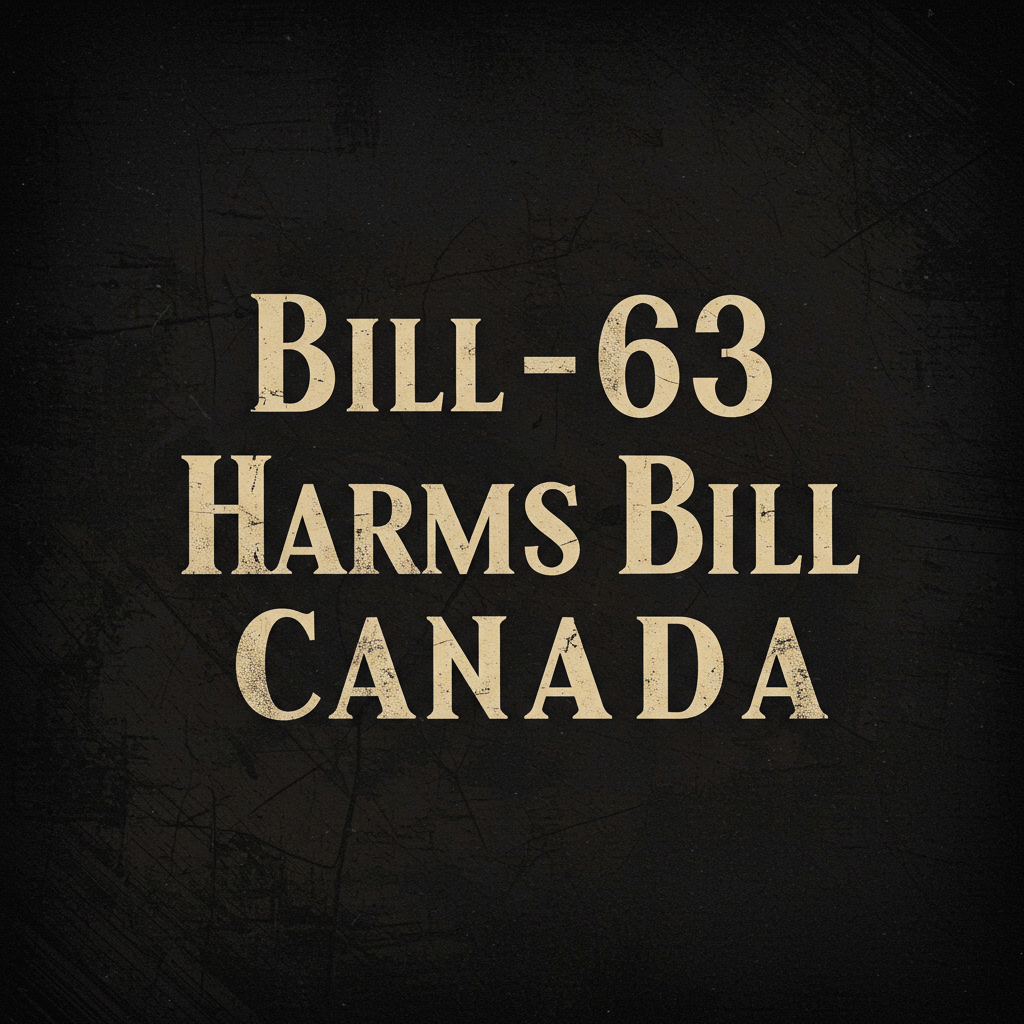Canada’s Bill C-63, formally the Online Harms Act, represents a landmark and deeply contentious effort to reshape the legal landscape governing digital spaces. Tabled on February 26, 2024, the legislation seeks to impose a new regulatory framework on online platforms to hold them accountable for harmful content, with a particular focus on protecting children. The bill places Canada within a broader global movement, alongside laws like the UK’s Online Safety Act and the EU’s Digital Services Act.
The legislation is a complex package that imposes a new duty of care on platforms while also introducing sweeping changes to the Criminal Code and the Canadian Human Rights Act. This has created a fundamental tension between the stated goals of online safety and the imperative to protect freedom of expression and privacy. This is the full story on what the bill does and why it has ignited such a fierce debate.
Part 1: The Architecture of Bill C-63
Bill C-63 is an omnibus bill composed of four distinct parts.
- The Online Harms Act: The centerpiece, creating a new regulatory framework for social media services and a powerful new Digital Safety Commission to enforce it.
- Criminal Code Amendments: Introduces a new standalone “hate crime” offence with a maximum penalty of life imprisonment and a “peace bond” provision for individuals feared to be at risk of committing a future hate crime.
- Canadian Human Rights Act Amendments: Revives and modifies Section 13, making the online communication of “hate speech” a discriminatory practice, allowing for complaints to the Canadian Human Rights Commission.
- Mandatory Reporting Act Amendments: Strengthens rules requiring internet service providers to report online child sexual exploitation material (CSAM).
This structure has been criticized by legal experts like Dr. Michael Geist for bundling broadly supported child safety measures with the more contentious hate speech provisions, forcing a difficult “all-or-nothing” vote.
Part 2: The New Digital Experience for Platforms and Users
The Online Harms Act imposes three principal duties on platforms like social media networks, live-streaming services, and user-uploaded adult content sites.
- Duty to Act Responsibly: Platforms must implement measures to mitigate the risk that users will be exposed to seven specific categories of harmful content, including content that foments hatred, incites violence, or bullies a child.
- Duty to Protect Children: Platforms must integrate “age-appropriate design features” into their services to create safer environments for users under 18.
- Duty to Make Certain Content Inaccessible: For the two most egregious categories—CSAM and non-consensual intimate images—platforms have a strict 24-hour deadline to make the content inaccessible in Canada.
For users, this will likely lead to more aggressive content moderation, new tools to block and flag content, and potentially more stringent age-verification systems.
Part 3: The Core Controversies
While there is broad consensus on the need to address some online harms, critics from across the spectrum have raised serious alarms about the bill’s potential impact on fundamental rights.
Freedom of Expression
The most prominent criticism is that the bill will create a significant “chilling effect” on free speech. Groups like the Canadian Civil Liberties Association (CCLA) argue that vague definitions for harms like “fomenting hatred,” combined with the threat of massive fines (up to 6% of global revenue), will incentivize platforms to over-remove legitimate but controversial content to minimize their legal risk.
Privacy and Government Overreach
The new Digital Safety Commission is granted vast powers, including the ability to compel information and to “remotely… access and search” a platform’s systems and data. Privacy advocates warn that these are forms of warrantless remote government access to private data with insufficient safeguards or judicial oversight.
Changes to Criminal Law
The amendments to the Criminal Code have been condemned for departing from fundamental principles of justice.
- Life Imprisonment for Hate Crimes: The proposal to attach a maximum penalty of life imprisonment to any hate-motivated crime is viewed by the CCLA as “grossly disproportionate.”
- “Pre-Crime” Peace Bonds: The peace bond provision, which allows for restrictions on individuals who are merely *feared* to be at risk of committing a future hate crime, is seen as a violation of the presumption of innocence and a shift toward punishing people for what they might think or do, rather than for unlawful acts they have already committed.
Conclusion: Navigating the Path Forward
Bill C-63 stands as one of the most consequential legislative proposals in recent Canadian history. It encapsulates a central conflict of modern governance: the state’s duty to protect its citizens from severe harm versus its solemn obligation to safeguard the fundamental rights of expression, privacy, and due process. The passionate debate over the bill is, at its core, a debate about the very nature of the digital public square that Canadians wish to build and inhabit in the 21st century. The official text and status of the bill can be tracked on the Parliament of Canada website.

